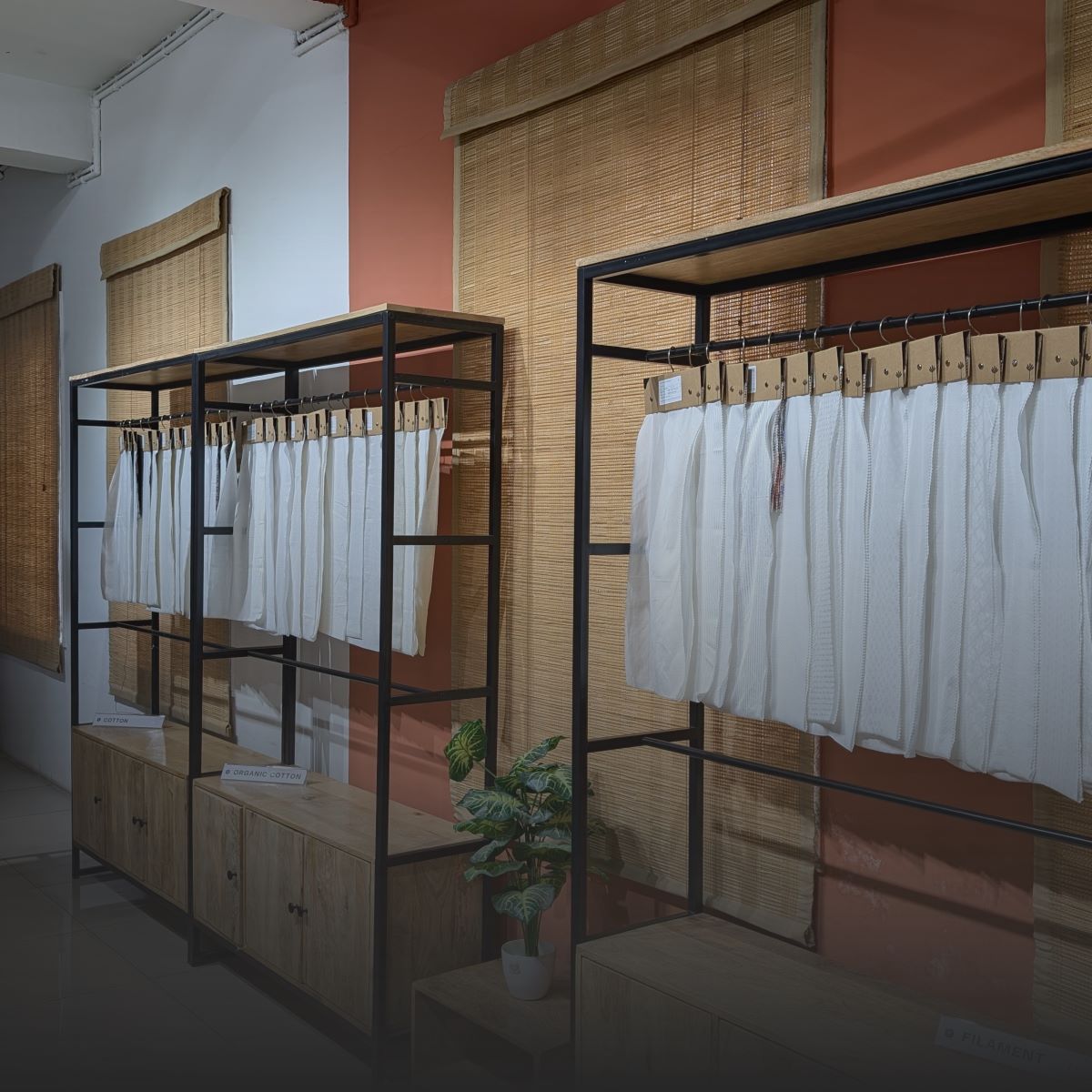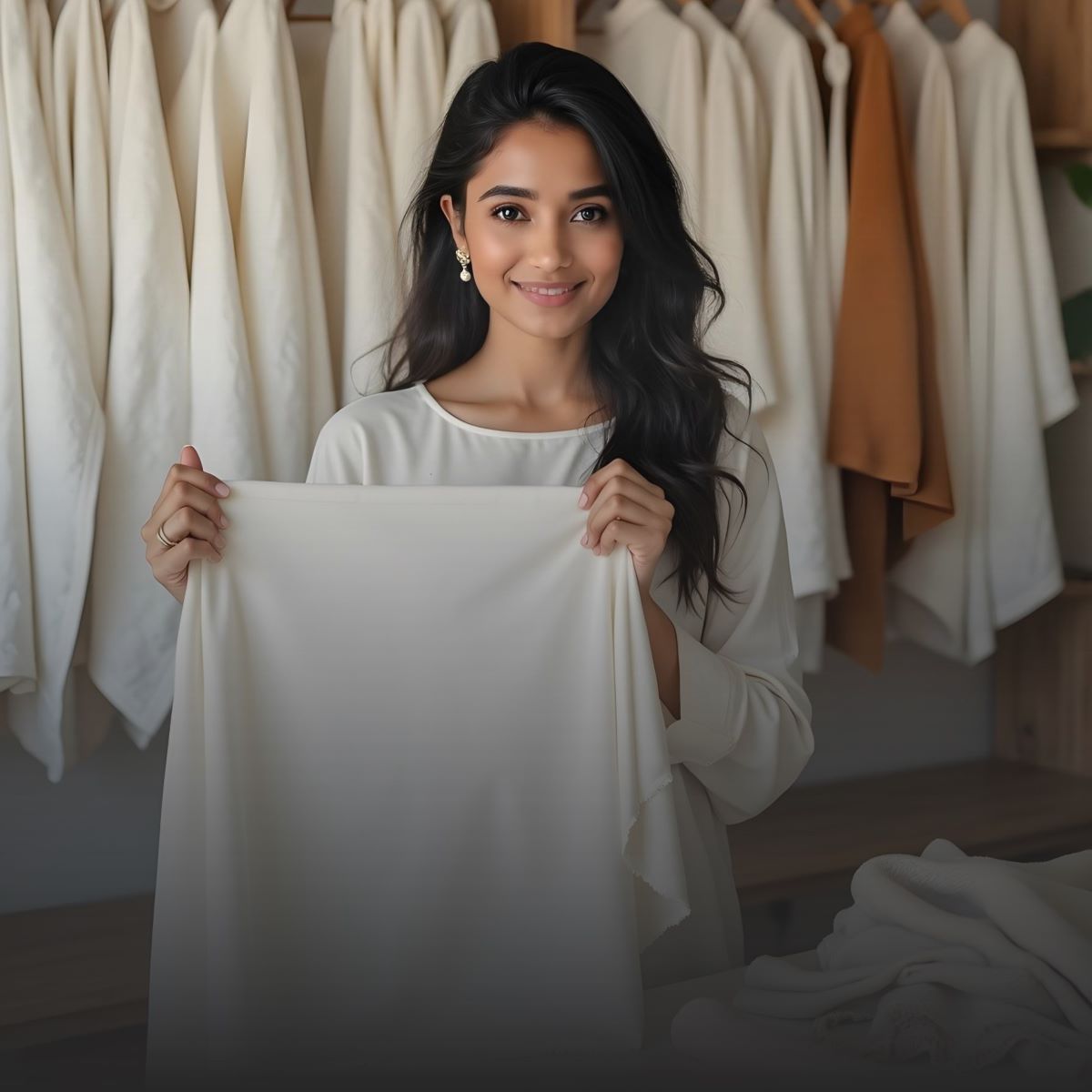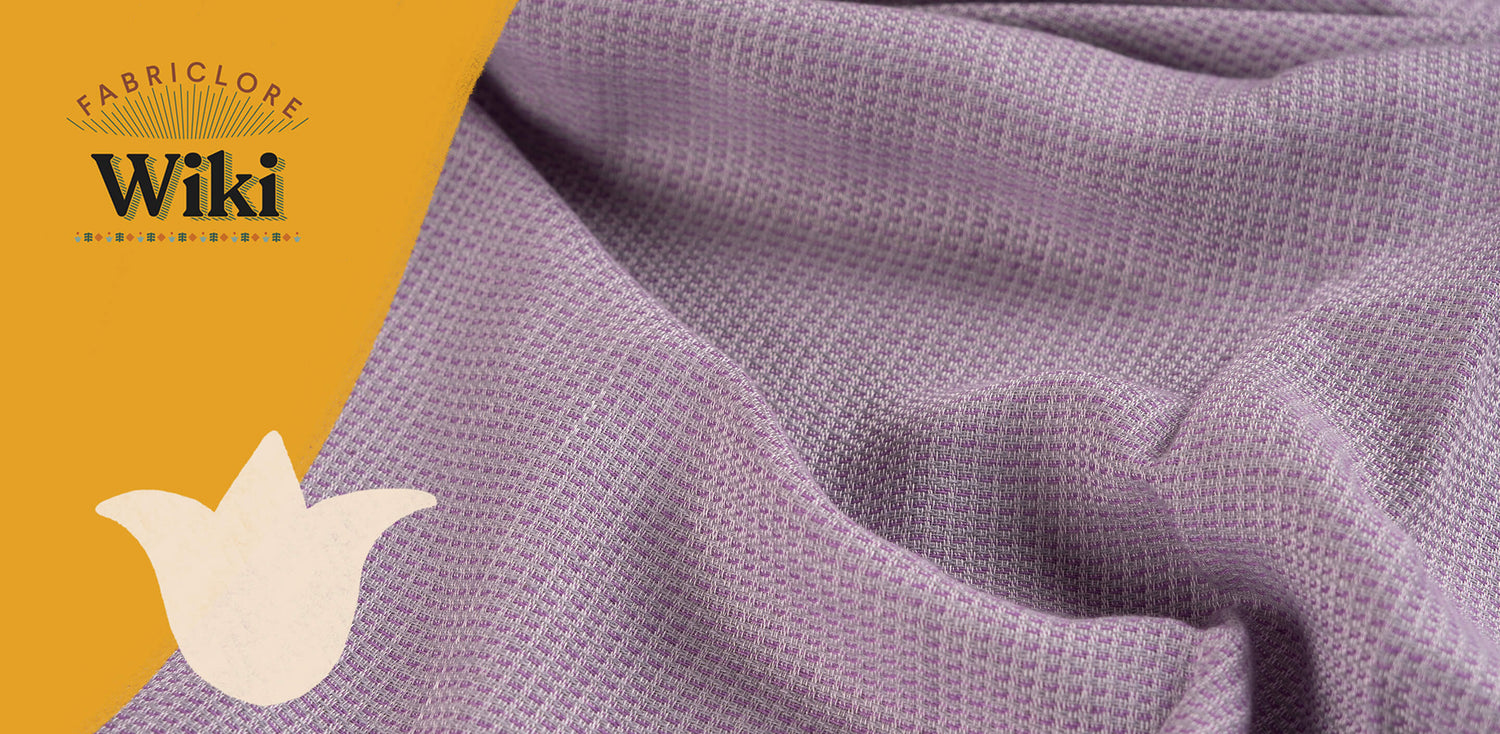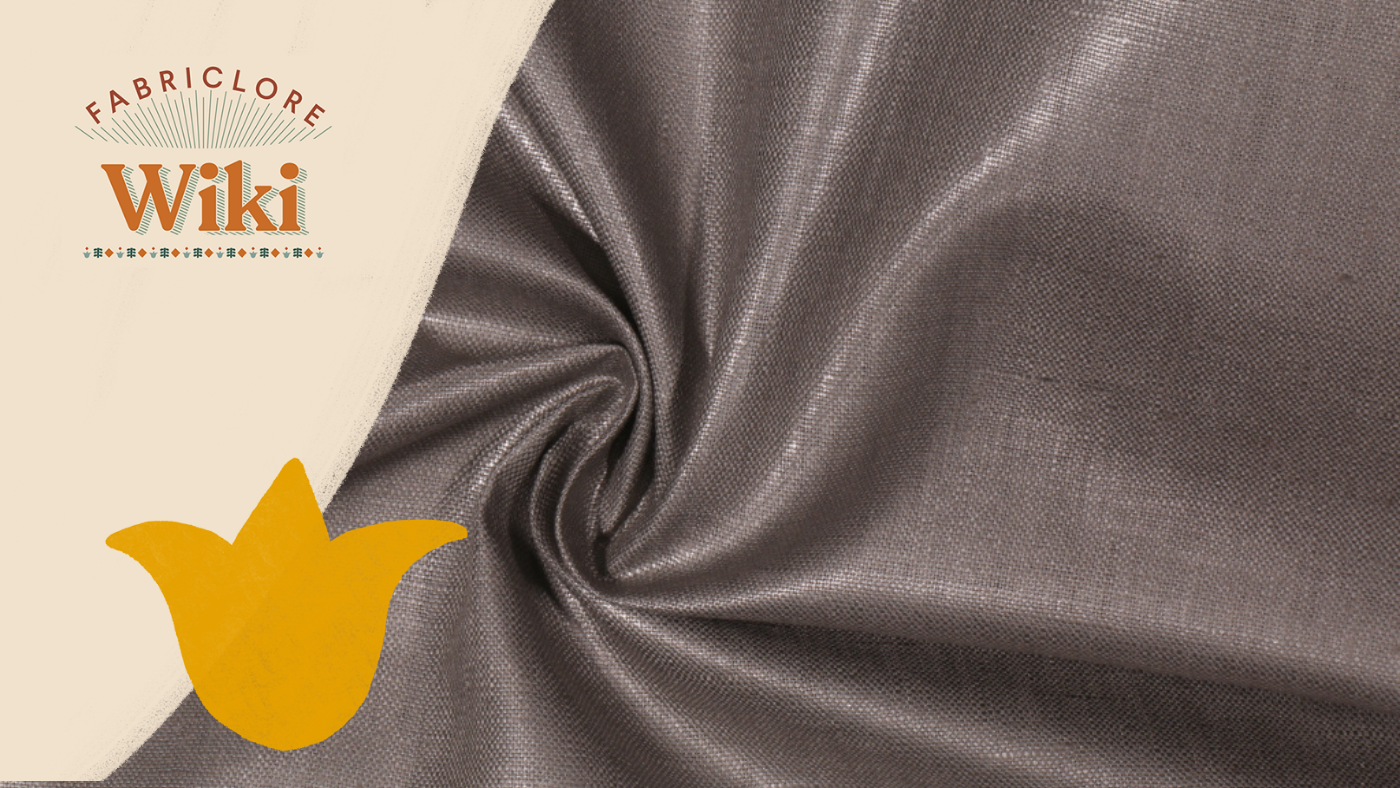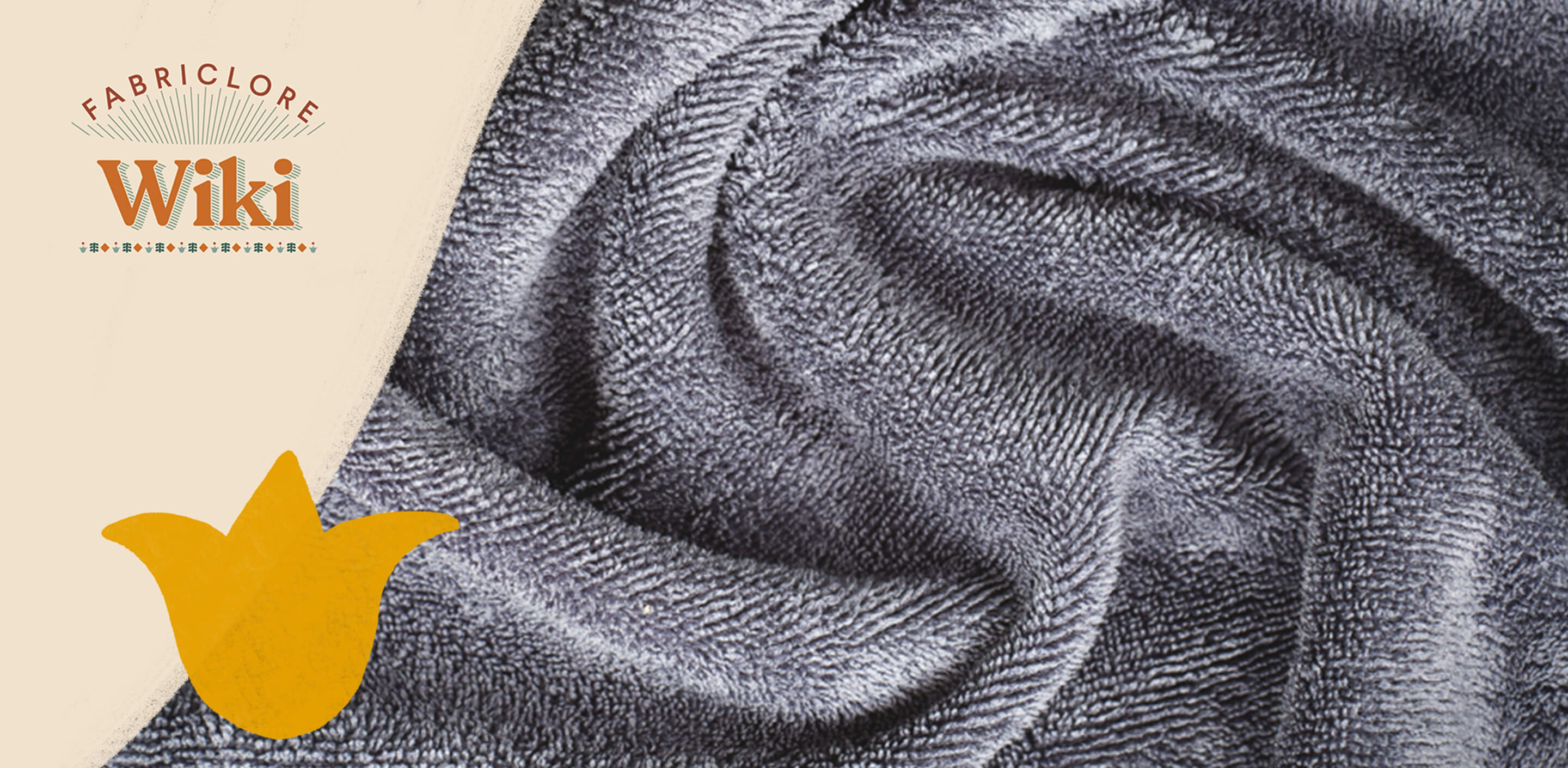Introduction to Twill Fabric
- Twill fabric is a strong and versatile material with a unique diagonal pattern.
- It’s used in many everyday items like denim jeans, chinos and curtains.
- Twill is durable, practical and stylish, making it a popular choice in both fashion and home decor.
History of Twill Fabric

- Twill fabric has been around for a very long time, starting around 3000 BC in places like Mesopotamia and Egypt.
- Its special diagonal weave made it strong and good-looking, which made it valuable for trade.
- Over time, twill spread to China and became popular in Europe during the Middle Ages as a sign of wealth.
- In the Renaissance, it was improved and used for everyday and trade purposes.
- During the Industrial Revolution, machines allowed twill fabric to be produced in large quantities.
- Denim, a type of twill fabric, became very popular for work clothes and casual wear, especially in the United States.
What is Twill Fabric?
- Twill fabric is a strong and durable material with a diagonal pattern.
- It's uniquely made by weaving threads.
- Unlike plain weave, which has a simple cross pattern or satin weave, which is smooth and shiny, twill is more flexible and doesn't wrinkle easily.
- It can be made from cotton, wool, silk or synthetic fibers.
- The texture and thickness of twill depend on the number of threads and the quality of the yarn.
- Twill has been used for thousands of years and is common in jeans and jackets because it lasts a long time.
Modern Innovations in Twill Fabric:
|
Innovation |
Key Features |
Impact |
|
Sustainable and Recycled Materials |
Organic cotton, recycled polyester, closed loop systems |
Eco-friendly production reduces waste and promotes sustainability |
|
Waterless Dyeing |
Technologies like foam dyeing and CO₂ dyeing |
Reduces water usage, minimizes effluents, cuts costs |
|
Digital Printing on Twill |
High precision designs with less water and ink |
Customization, vibrant colors, reduced environmental impact |
|
Smart Manufacturing |
AI-driven weaving machines, energy-efficient production |
Enhances consistency, reduces defects, lowers energy consumption |
|
Weather Resistant Clothing |
Water-repellent, windproof, breathable weaves |
Ideal for outdoor gear and activewear |
|
Moisture-Wicking and Antimicrobial |
Moisture-wicking, antimicrobial treatments |
Keeps wearers dry, comfortable, and hygienic in sportswear |
|
Fire-Resistant and Abrasion-Resistant |
Flame retardant and abrasion-resistant finishes |
Suitable for industrial gear, enhances durability |
What Makes Twill Fabric Special?

- Twill fabric is strong, doesn't wrinkle easily and has a unique texture.
- The way it is woven in diagonal lines makes it durable, so it's great for clothes like jeans and jackets.
- It also resists wrinkles, so clothes like suits and chinos look neat all day.
- The diagonal lines give it a stylish look, making it perfect for both casual and formal wear.
- Twill is also soft and flexible, so it's comfortable to wear.
- It's used in home items like furniture fabric and curtains because it's tough and stylish.
Types of Twill Fabric
Here’s a simplified table summarizing the different types of twill fabric:
|
Type of Twill Fabric |
Characteristics |
Common Uses |
|
Cotton Twill |
Versatile, breathable, soft, easy to care for |
Clothing, upholstery, accessories |
|
Denim |
Heavyweight, durable, with diagonal ribbing |
Jeans, workwear |
|
Chino |
Medium weight, soft, diagonal weave |
Casual pants, shorts |
|
Gabardine |
Tightly woven, small vertical ribs, durable, wrinkle-resistant |
Suits, skirts, formal wear |
|
Herringbone |
Distinctive V-shaped pattern |
Jackets, coats |
|
Cavalry Twill |
Sharp diagonal design, strong weave |
Uniforms, heavy duty workwear |
|
Zigzag Twill |
Recognizable diagonal pattern, made from various fibers |
General use in textiles |
|
Diamond Twill |
Diamond shaped pattern with concentric lines |
Apparel, home textiles |
|
Diaper Twill |
Complex diamond pattern, originally for diapers |
Certain textile applications |
Advantages of Twill Fabric
- Twill fabric is strong and durable with a unique pattern.
- The diagonal weave makes it tough, so it doesn’t wear out or wrinkle easily.
- This is why it's used for things like jeans, work clothes and jackets.
- It also stays neat with little care, making it good for uniforms and office clothes.
- The fabric’s texture gives it a stylish look, so it's used in clothes like suits and skirts, as well as in home items like curtains and upholstery.
- Twill is a useful and fashionable fabric for many different things.
Disadvantages of Twill Fabric
- It’s heavier than other fabrics, so it might not be the best choice for light clothes, especially in hot weather.
- Twill, especially cotton or wool, can be harder to clean because dirt and stains get stuck in the fabric.
- Sometimes, it needs extra care or dry cleaning.
- Also, twill, like denim, can fade or wear out in places like the knees or pockets, which can make it look uneven over time.
Sustainability and Environmental Impact of Twill Fabric
- Twill fabrics, such as denim and cotton twill, can harm the environment due to the water and chemicals used in making them.
- Regular cotton farming also hurts the soil and pollutes water.
- But there are better ways now, like using eco-friendly dyes, waterless dyeing, and organic cotton, to reduce these problems.
- Recycling old denim clothes and reusing materials are also helping to make twill fabric production more eco-friendly.
How to Wash and Care for Twill Fabric

- To care for twill fabric and keep it looking good, always follow the care instructions on the label.
- For heavy fabrics like denim, wash them less to prevent fading and wear and clean stains gently.
- Use cold water for stains and avoid harsh chemicals.
- When storing, fold heavy fabrics and hang lighter ones using padded or wooden hangers to keep their shape.
- Keep clothes out of direct sunlight and avoid overcrowding.
- Use cedar or lavender to keep bugs away.
- Different twill fabrics, like denim, cotton, wool and silk, need different care, like washing denim in cold water, dry cleaning wool and handwashing or getting silk professionally cleaned.
The Role of Twill Fabric in Fashion and Design:
|
Aspect |
Details |
|
Timeless Classics |
|
|
Modern Adaptations |
|
|
Workwear |
|
|
Casualwear |
|
|
High-End Fashion |
|
|
Sustainable Twill Fabrics |
|
|
Digital Printing and Textural Innovations |
|
|
Versatility in Outerwear |
|
|
Innovative Twill Blends |
|
Common Applications and Uses of Twill Fabric:
|
Category |
Application |
Description |
|
1. Apparel |
Jeans and Denim Clothing Chinos and Casual Trousers Jackets and Outerwear Uniforms |
Denim twill is used in jeans, jackets, skirts and shirts, offering strength, flexibility and durability for heavy wear. Chino twill is used for chinos, offering a smooth, soft texture with a polished finish, ideal for casual office wear and semi casual events. Gabardine and herringbone twill are used for jackets, trench coats, blazers and tailored jackets, providing warmth, structure and style. Cotton twill is used for military, school and work uniforms due to its durability and resistance to wear, maintaining a crisp appearance after repeated washing. |
|
2. Home Textiles |
Upholstery Curtains and Draperies Cushion Covers and Bedding |
Twill fabric is used for sofas, chairs and cushions, providing strength and durability, with a visually appealing diagonal weave. Twill is used for curtains and drapes, offering a clean, crisp look, draping beautifully and providing privacy and light control, such as gabardine twill. Twill fabrics are used for cushions, pillows and bed linens, offering durability and texture, enhancing the aesthetic and ensuring longevity. |
|
3. Accessories |
Hats Bags and Purses Scarves and Neckwear |
Twill is used in hats like baseball caps and fedoras, maintaining shape and providing comfort. Denim twill and cotton twill are popular, with silk twill used for upscale hats. Twill is used in bags like tote bags and backpacks, offering durability and structural integrity. The fabric’s diagonal weave adds texture and strength. Silk twill is used for scarves and ties, offering a smooth finish and rich texture. Its ability to be digitally printed makes it popular for stylish, high end accessories. |

Manufacturing Process of Twill Fabric:
|
Stage |
Details |
|
1. Selection of Raw Material |
Fibers Used: Cotton, wool, silk, polyester or blends. Purpose Based Choice: Fiber choice depends on the intended use |
|
2. Fiber Preparation |
Cotton: Ginned to remove seeds, then carded and combed for smoothness. Wool: Scoured to remove grease and impurities, then carded. Synthetic Fibers: Melted, extruded and drawn into filaments. |
|
3. Spinning |
Fiber to Yarn: Fibers are spun into yarns, with varying coarseness based on the product. Twist Application: Twist adds strength and texture to the yarn. |
|
4. Dyeing or Bleaching (Optional) |
Pre Weaving Dyeing: Yarn dyed before weaving. Bleaching: Lightens natural fibers for even dyeing or a lighter base color. |
|
5. Weaving |
Twill Weave Setup: Warp and Weft: Threads arranged on a loom. Twill Pattern: Weft thread woven over one or more warp threads and under two or more, forming diagonal ribs. Weave Angles: Commonly 45°, with variations for steeper or flatter ribs. Looms Used: Traditional shuttle looms or modern automatic looms. |
|
6. Finishing |
Brushing or Raising: Creates a softer texture. Washing or Sanforization: Shrinkproofs or softens the fabric. Surface Treatments: Adds coatings or finishes for water resistance or durability. |
|
7. Quality Control |
Inspected for weaving defects, uneven dyeing or other imperfections. |
|
8. Final Processing |
Cutting and Rolling: Fabric cut into standard rolls for shipment. Packaging: Prepared for distribution to manufacturers or retailers. |
Twill vs Other Fabrics:
|
Property |
Twill |
Plain Weave |
Satin Weave |
Knit Fabrics |
|
Pattern |
Diagonal ribs |
Flat, no pattern |
Smooth, shiny |
Loop-based, flexible |
|
Durability |
High |
Moderate |
Low |
Low to Moderate |
|
Appearance |
Textured, structured |
Smooth, simple |
Lustrous, elegant |
Stretchy, Casual |
|
Usage |
Denim, chinos, workwear |
Shirts, dresses, basics |
Gowns, luxury items |
Activewear, loungewear |
How to Judge the Authenticity of Twill Fabric:
|
Criteria |
Evaluation Method |
|
1. Diagonal Weave Pattern |
-Key Identifier: Look for distinct diagonal ribs or patterns. -Test: Examine under light; authentic twill shows visible diagonal lines. -Reverse Side: Should display a less pronounced, but still visible diagonal structure. |
|
2. Assess Durability |
-Tight Weave: Check if the weave is tight and sturdy. -Tensile Test: Gently pull the fabric; authentic twill resists stretching and feels strong. |
|
3. Feel the Texture |
-Smooth Yet Structured: Twill feels smooth with slight texturing from diagonal ribs. -Weight and Thickness: Heavier than plain weaves, adding to its durability. |
|
4. Check for Common Uses |
-Typical Applications: Authentic twill is common in denim, chinos, gabardine, and upholstery. -Warning: Lightweight, excessively stretchy fabrics are unlikely to be genuine twill. |
|
5. Conduct a Drapability Test |
-Drape Behavior: Twill should drape gracefully while maintaining structure. Poor drape suggests low quality. |
|
6. Verify Fiber Content |
-Fiber Match: Ensure the fiber aligns with the intended use. -Burn Test (optional): Cotton twill leaves ash; synthetic twill melts. |
|
7. Inspect Color Consistency |
-Dyeing Quality: Authentic twill has even coloring and professional finishing. Uneven fading indicates poor quality. |
|
8. Buy from Trusted Suppliers |
-Reputation: Purchase from reputable suppliers specializing in quality fabrics (e.g., Fabriclore). |
Conclusion
Twill fabric is strong, long lasting and versatile, with a diagonal weave that makes it stand out. It's used in many things, like denim jeans and silk scarves, because it's practical and stylish. New eco-friendly methods, like using less water for dyeing, help keep twill popular today. While it can be heavy and hold dirt, these are easy to manage appropriately. Twill is a reliable, sustainable choice for many types of design.
We also happen to be a magnet for suggestions, and would love to catch yours….throw us yours on hello@fabriclore.com
